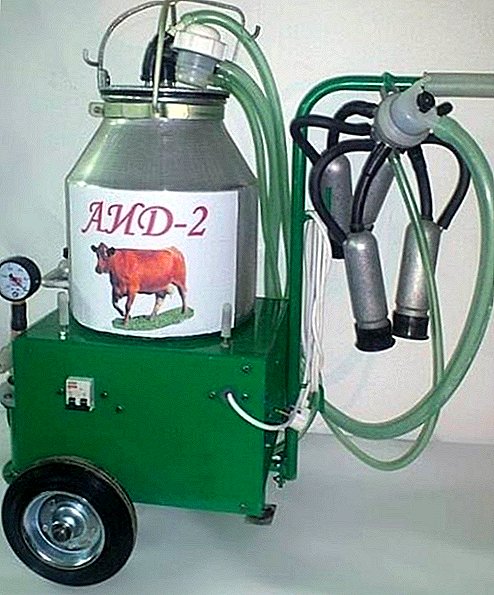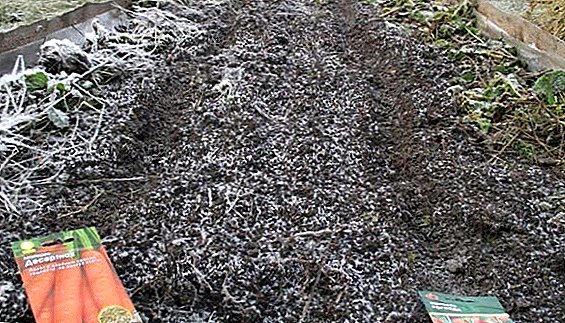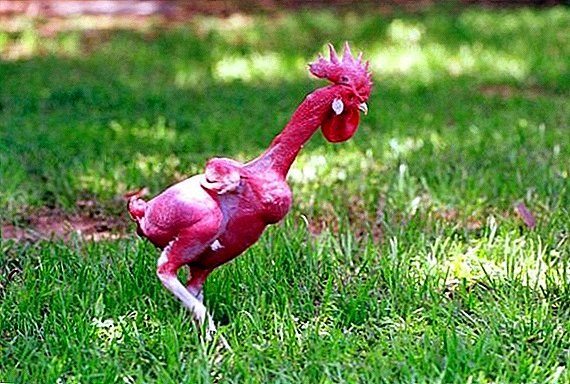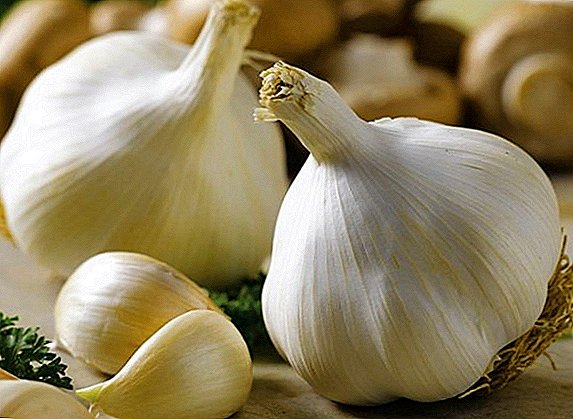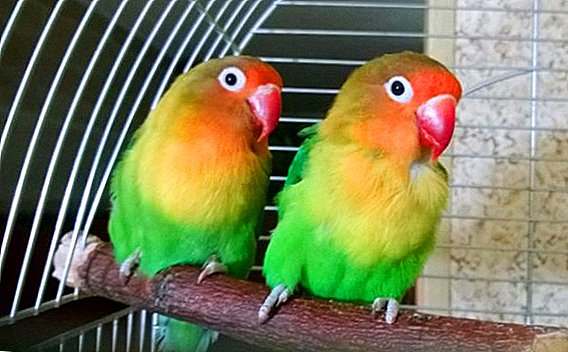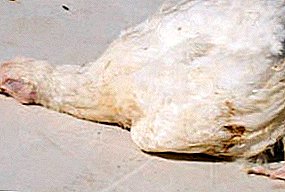
The farms bear the most damage from the sudden death of a bird. There are many dangerous diseases that can threaten the health of the entire population of chickens, but cell paralysis is considered one of the most unpleasant and dangerous.
This is a highly contagious poultry disease that most often affects highly productive breeds of chickens during the period of maximum egg production. It was during this period that the egg-laying breeds of chickens are most vulnerable to the development of cellular paralysis.
The disease is accompanied by the formation of a large number of lymphoid tumors throughout the body of the bird.
In this case, due to pressure, the tumors block some nerve endings, which leads to stiff movements in the chicken or to complete paralysis of its limbs.
What is chickens paralysis?
 This disease has appeared relatively recently.
This disease has appeared relatively recently.
The first mention of chickens whose symptoms were noticed was dated in 1907. It was at this time that the scientist J. Marek was able to fully describe the cellular paralysis of chickens.
The disease brings large economic losses for a chicken farm of any size. They are caused by increased waste of birds.
This reduces their productivity, and the cost of veterinary services and medicines increases greatly.
Scientists estimate that a sick layer of a highly productive egg-bearing breed during the laying period carries 16-10 eggs less. On average, a sick bird has only 50 eggs to demolish until its death, rarely this figure rises to 110.
Cellular paralysis, in the case of occurrence within the same economy, can affect from 40 to 85% of all poultry. The forecast for half of the livestock is rather pessimistic - about 46% of chickens will die. This will cause irreparable damage to the income of the chicken farm.
Pathogens
 The causative agent of this disease is a DNA virus that belongs to the subfamily Gammaherpesviridae, a family of Herpesviridae.
The causative agent of this disease is a DNA virus that belongs to the subfamily Gammaherpesviridae, a family of Herpesviridae.
This family includes herpesvirus arachnids and squirrel monkeys. Perhaps it was from these animals that the virus "migrated" to poultry.
The virus responsible for the manifestation of cellular paralysis, especially its cell-related form, is stable in any external environment. That is why it does not lose its viability in the litter of sick chickens, on the surface of eggs, and even in the epithelium of the follicles of feathers during the next 200-300 days.
In the blood of chickens, the antigen of this virus is detected three days after infection.in the spleen after a week, in the kidneys and liver after 2 weeks, in the skin, nerves, heart after 3 weeks, in the brain after a month, in muscles after 2 months.
The virus of cell paralysis immediately settles on T-lymphocytes, causing the growth of lymphomas throughout the body of poultry.
Symptoms and course
 The symptoms of cellular paralysis in chickens depend on what form of the disease develops in their body.
The symptoms of cellular paralysis in chickens depend on what form of the disease develops in their body.
Veterinarians distinguish the classic and acute form of this disease. During the development of the classical form of the chickens the peripheral and central nervous system begins to suffer.
There may be many different symptoms. Chicks become lame-legged, and in some cases limbs are completely paralyzed.. The tail practically does not move, movements in the neck area become more constrained.
Also, the disease in the classical form can be determined by the pupil of young animals. The iris begins to turn gray. As for mortality in this form of the disease, it is from 3 to 7%, but sometimes it can reach more than 30%.
Increased waste poultry can be seen in age from 3 to 5 months. Moreover, it was noted that birds suffering from vision problems die less frequently, but their productivity is significantly reduced.
The acute form of this disease is manifested by the formation of a large number of lymphoid tumors. It usually appears in chickens 4–12 years old, but sometimes it can also manifest in more adult birds.
Tumors affect almost all organs and tissues. The duration of the incubation period of this form is from 14 days to 2-5 months.
 Small tongue is not the most popular bird. She has a not very attractive appearance.
Small tongue is not the most popular bird. She has a not very attractive appearance.On this page //selo.guru/ptitsa/kury/porody/sportivno-dekorativnye/azil.html you can learn all about the Azil.
Symptoms of damage to the nervous system are rarely recorded in sick chickens, but in one-month-old calves there is a massive but brief manifestation of symptoms in the form of paralysis and paresis.
Most chickens get sick with this disease for a week, and then no signs of damage to the nervous system are found. However, after a month or two, the birds' waste significantly increases, and they are diagnosed with multiple tumor formation.
Diagnostics
 Cellular paralysis is always diagnosed with epizootic data, the results obtained during the autopsy of fallen birds, as well as histological studies of the affected internal organs and their systems.
Cellular paralysis is always diagnosed with epizootic data, the results obtained during the autopsy of fallen birds, as well as histological studies of the affected internal organs and their systems.
Also, to determine the disease used retrospective serological studies. Under laboratory conditions, the cell paralysis virus can be isolated from the biological material of chickens with the help of fibroblasts of poultry embryos.
To clarify the diagnosis can perform bioassay on day-old chickens. Her results are evaluated after 14 days.
This determines the presence of a virus-specific antigen in the feather follicles, and also takes into account all the histological changes in the internal organs.
Treatment
 There are only a few types of vaccines that can help combat this disease:
There are only a few types of vaccines that can help combat this disease:
- Attenuated variants of malignant strains of the first type of virus that cause cellular paralysis of birds. They are obtained by serial passaging on cell culture.
- Natural apathogenic strains of the second type of cell paralysis virus.
- Vaccine from benign herpesvirus turkeys of the third subtype.
The above vaccines are effective and completely safe for all poultry. However, before using them, it is necessary to conduct a detailed study of the whole chicken farm, analyzing the epizootic situation in it. In severe cases of complete infection of the population of chickens, additional vaccination is carried out.
Prevention
 All of the above vaccines can also be used to prevent cell paralysis.
All of the above vaccines can also be used to prevent cell paralysis.
At the same time on the chicken farm one should not forget about the complex of organizational, sanitary and technological measures.
Eggs for incubating chickens need to be bought only from those farms whose adult birds have never suffered from this disease, because of the high virulence of the virus, it can easily be transmitted to young animals.
If the chickens become ill, they should be separated from healthy individuals in order to avoid mass infection.
It is possible to breed breeds of chickens resistant to this disease.. Now it is actively engaged in breeders. However, if in the house about 5-10% of the chickens are sick, then all the livestock need to be slaughtered. Immediately after this, a complete renovation of the room is carried out.
Newly purchased young must necessarily be vaccinated with live vaccines against herpesvirus, and a month later the fluff is disinfected to completely eliminate the possibility of a new outbreak of the disease.
Conclusion
Cellular paralysis of chickens is a dangerous viral disease that can cause the death of all poultry on the farm. Because of this, breeders should be attentive to their chickens, especially the young. Timely vaccination and compliance with all sanitary standards - the guarantee of health of all livestock.



